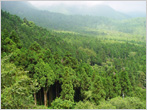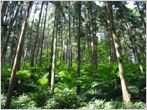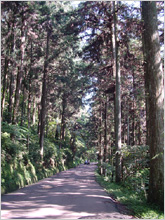 |
1. Research:
In addition to basic scientific research, studies at the Experimental Forest focus on finding solutions to forest management problems and helping local businesses and communities develop and prosper.
2. Education:
The Experimental Forest has bountiful natural resources and a variety of facilities, providing an ideal setting for field training courses for students whose majors are related to Forestry. Graduate students can find study topics and conduct research in the Experimental Forest. We encourage schools to join with the Experimental Forest to teach and train their students.
3. Forest Management Demonstration:
 |
(a) Land use management: Plantations, contract forests and forest lands managed for other uses are monitored and surveyed regularly. Survey results are transferred directly to the forest Geographic Information System master database. This allows us to computerize and digitize forest management and preserve the integrity of the Experimental Forest.
(b) Forest ecosystem management: Forest resources are managed for multiple uses using ecological concepts. Long-term monitoring and repeated surveys provide the basic information used to evaluate management practices and support policy-making. Enforcement of bans on illegal logging and farming help achieve the goal of sustainable harvest.
 |
(c) Management of multiple-use forests: Natural forests are left in their original state and protected against anthropogenic disturbances. In man-made forests, forest structure is changed, rotation periods have been lengthened and superior, native tree species have been selected to create multi-layered, mixed species plantations that enhance wood quality and quantity.
(d) Contract forests: Forestation, done in accordance with the “Guidelines for planting forests”, has been encouraged and rewarded on contract lands. The Shalixian Nature Education Center and the Fenghuang Nature Education Garden serve as ecological education classrooms. To safeguard the land and protect people from harm, great efforts are made to conserve soil and water and to conserve resources in the Experimental Forest.
4. Environmental Conservation:
Current forestry policies emphasize ecological conservation. There are many unique habitats, and rare plant and animal species in the Experimental Forest. To enhance nature conservation, many ecological and wildlife reserves have been planned.